Laser-Produced Plasma Research
Laser produced plasmas (LPP), formed when a high power pulsed laser is focused onto a dense medium, have been the subject of considerable attention since their discovery in 1960’s. Studies have been driven not only by a desire to obtain a full understanding of their fundamental physics underlying their formation and evolution across the wide parameter spaces in which they can exist but also to develop and exploit applications. Some of the applications of LPP include, Pulsed Laser Deposition (PLD), nanoparticle production, EUV light sources and ion accelerators. In addition, laser plasmas are playing an important role in the search for solutions to problems stretching from energy generation (for eg. ICF) to environmental monitoring (LIBS).
Currently our research is focused on following areas:
- Laser-induced breakdown spectroscopy
- Laser-ablation ICP-MS (LA-ICP-MS)
- LPP sources for EUV lithography (13.5 nm)
- LPP sources for Water-window microscopy (2.4 - 4 nm)
- Colliding plasmas
- Plasma Diagnostics
- Laser-plasma modeling using HEIGHTS
Recent LPP Publications from CMUXE:
LPP Facilities at CMUXE:
Laser Sources:
- TEA CO2 laser (55 ns, 1 J)
- Nd:YAG laser (8 ns FWHM, 0.6 J, SHG & THG)
- Nd:YAG laser (6 ns FWHM, 0.8 J, SHG & FHG)
- Pulsed Alexandrite laser (730-790 nm, 10-50 ns)Alignment lasers (He-Ne & green diodes)
Plasma and laser diagnostics:
- Laser beam diagnostics (beam profilers, photodiodes, energy meters)
- EUV Transmission grating spectrograph (5-20 nm)
- WW Spectrograph (2-4 nm)
- Princeton Instruments f = 50 cm visible spectrograph
- Princeton Instruments PIXIS-XO X-ray camera
- Princeton Instruments PIMAX ICCD camera
- Andor Shamrock 750 spectrograph
- Andor iStar ICCD camera
- High resolution EUV pinhole camera (home-built)
- Absolutely calibrated EUV energy meter (Scientec)
- EUV Filtered photodiodes (IRD)
- Interferometry
- Shadowgraphy
- Faraday cups
- Comstock Electrostatic Energy Analyzer
- Inficon Quartz Crystal Microbalance
- Photomultiplier tube
- Digital Delay Generators
- 1 GHz Agilent Oscilloscopes
- Power supplies
For further details contact: jtripat@purdue.edu or hassanein@purdue.edu
|
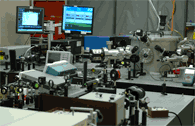
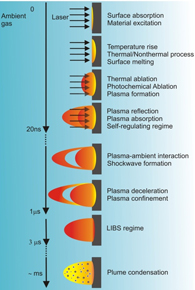

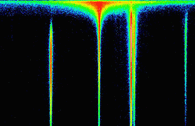
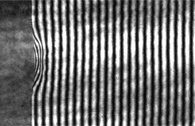
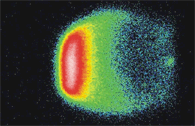
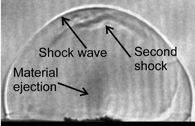 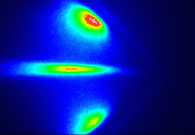
|



